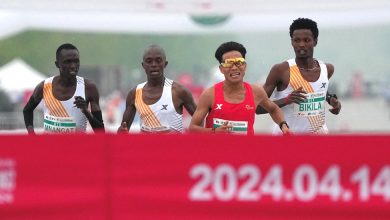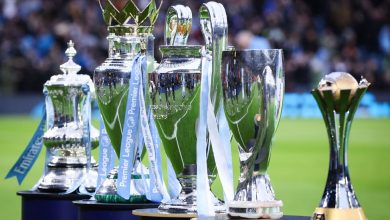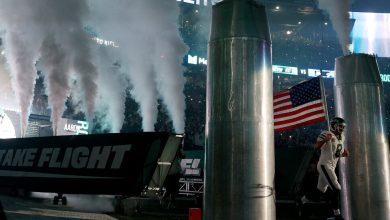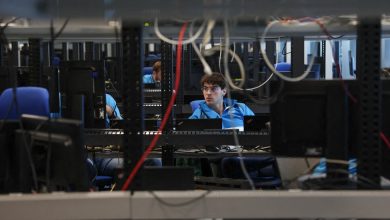As Formula 1 Surges in the U.S., IndyCar Hopes to Keep Up

For decades, May in motorsports in the United States focused on one event: the Indianapolis 500, one of America’s most storied sporting traditions and the crown jewel of the North America-based IndyCar racing series.
But that usual script flipped this year as Formula 1 kicked off the month with its inaugural Miami Grand Prix, an outlandish spectacle that served as the global series’ coming-out party in the United States, drawing A-list celebrities and the highest American TV ratings ever for a live Formula 1 race.
On the surface, IndyCar drivers welcomed Formula 1’s success. “If you love F1, then you will love IndyCar,” Josef Newgarden, a two-time IndyCar champion, said on Twitter. “Seeing the rise in popularity for the F1 side is such a positive for open-wheel racing as a whole.”
But could this truly be a case of rising tides’ lifting all boats, or is Formula 1 threatening to steal some of the limelight — and fans — from IndyCar?
Drivers ahead of Sunday’s Indianapolis 500 were not sure.
“To be brutally honest, it could be a potential threat like that,” said Helio Castroneves, a Brazilian IndyCar driver who last year won his record-tying fourth Indianapolis 500. But Castroneves, who attended the Miami Grand Prix along with several other IndyCar drivers, said he viewed Formula 1’s momentum as a positive sign.
“I believe all of the hype around Miami is contagious,” he said. “There are so many people telling me that they love Formula 1 and now want to come out to Indianapolis, so I don’t think this will jeopardize our fans. It will simply educate more people about racing.”
Formula 1 and IndyCar are both open-wheel-racing series, but there are key differences between them. In Formula 1, teams produce unique cars from the ground up based on strict specifications, with drivers competing on road courses and street circuits throughout the world. Big-money teams like Mercedes and Ferrari often dominate.
In IndyCar, competitors drive nearly identical cars, with races held on a mix of oval tracks, road courses and street circuits mostly in the United States. Parity is a hallmark of the series.
Decades ago, IndyCar — then known as Championship Auto Racing Teams — enjoyed mainstream success in the United States with notable drivers including the American racer Mario Andretti and the Formula 1 world champions Emerson Fittipaldi and Nigel Mansell. In 1996, however, an ownership dispute caused the series to splinter into two rival leagues, resulting in a sharp drop in interest and allowing NASCAR to ascend as the country’s premier motorsport.
“That split caused a lot of drama, and no one knew who to follow or where to watch the races,” said Juan Pablo Montoya, a Colombian driver who has won multiple races in both IndyCar and Formula 1. In 2008, the series reunited under the IndyCar name and in 2020 was purchased by the entrepreneur and American racing magnate Roger Penske.
Montoya said the new ownership, combined with Formula 1’s rising popularity in the United States, had drivers feeling optimistic about IndyCar’s future.
“There is a lot of positive momentum in IndyCar right now,” Montoya said. “And if you like Formula 1, the next closest thing in the U.S. is IndyCar, where the racing is very competitive and anyone can win on any given week. So I think everyone will benefit from F1’s success.”
Next year, Formula 1 will host races in three American metropolitan areas — Las Vegas; Austin, Texas; and Miami — the most of any country. Zak Brown, an American who is the chief executive of McLaren Racing, a British team that is one of the most storied in Formula 1, believes the added exposure will have a positive impact on all U.S. motorsports.
“Imagine the amount of new people who have been turned on to racing through Formula 1,” Brown said, adding that the American market is now a prime focus for McLaren — so much so that the company began investing in an IndyCar team, Arrow McLaren SP, in 2020.
“People have just been to the Miami Grand Prix, and they loved it,” Brown said. “Now, we have one of the biggest races in the world happening shortly after, so this is only increasing visibility for the Indy 500 and IndyCar, not detracting from it.”
Some industry analysts are more skeptical. Jon Lewis, a sports media professor at Northeastern University and the founder of Sports Media Watch, a blog that analyzes weekly sports ratings, is not convinced that Formula 1’s success in the United States will translate to broader American interest in motorsports.
“I suspect a lot of Formula 1’s new viewers aren’t so much into racing as they are the Netflix show,” Lewis said, referring to “Drive to Survive,” the streaming service’s documentary series about Formula 1 that has partly fueled the sport’s popularity increase. “And F1 turns its races into these glittering events, packed with celebrities. With IndyCar, you don’t even necessarily know where they’re racing from week to week.”
Dennis Deninger, a former ESPN producer and a sports communications professor at Syracuse University, said IndyCar and Formula 1 might ultimately need to collaborate in order for both to find sustained growth. In particular, he noted that Formula 1 should consider adding an American IndyCar driver to further its U.S. expansion while IndyCar could attract new viewers and popularity by inviting Formula 1 drivers to participate in select IndyCar races when scheduling allowed.
“Just imagine if Charles Leclerc or Max Verstappen were running in the Indianapolis 500,” Deninger said, referring to this year’s two leading Formula 1 drivers entering Sunday’s race in Monaco. “It’s rare that you see two distinct series have synergy like that, but that type of cross promotion between the two would work to everyone’s advantage in the long run.”
As for Sunday’s Indianapolis 500, Castroneves is optimistic that it will attract significant attention, partly because he will be looking to make history by winning it for a record fifth time. And he hopes that new Formula 1 fans who enjoyed the Miami Grand Prix will tune in to watch.
“I believe that IndyCar has the best competition of any racing series,” he said. “There is a certain magic to the Indianapolis 500. The history and tradition — you simply can’t reproduce it.”




